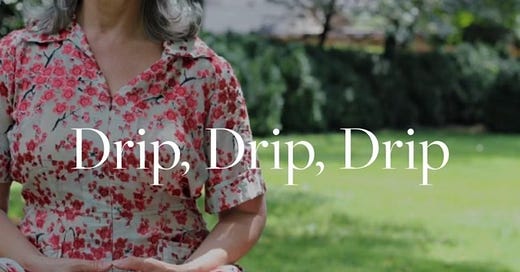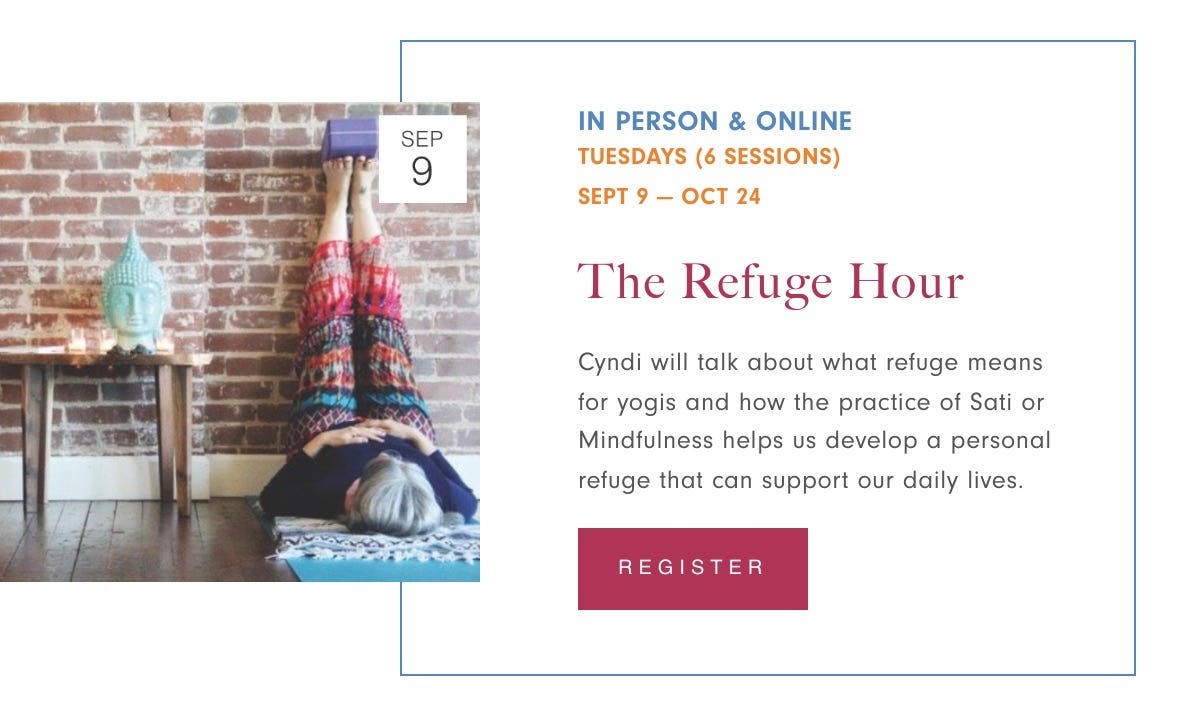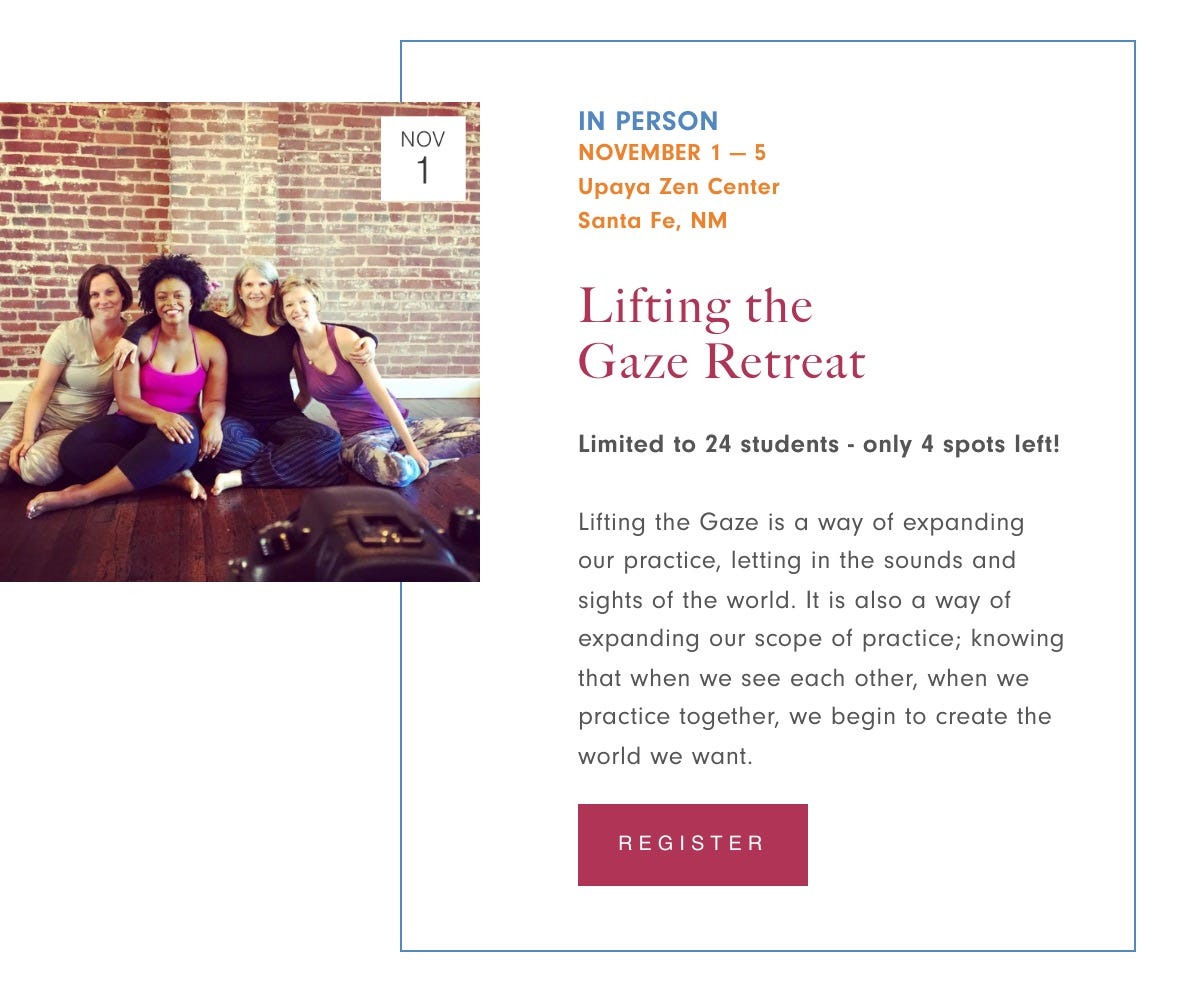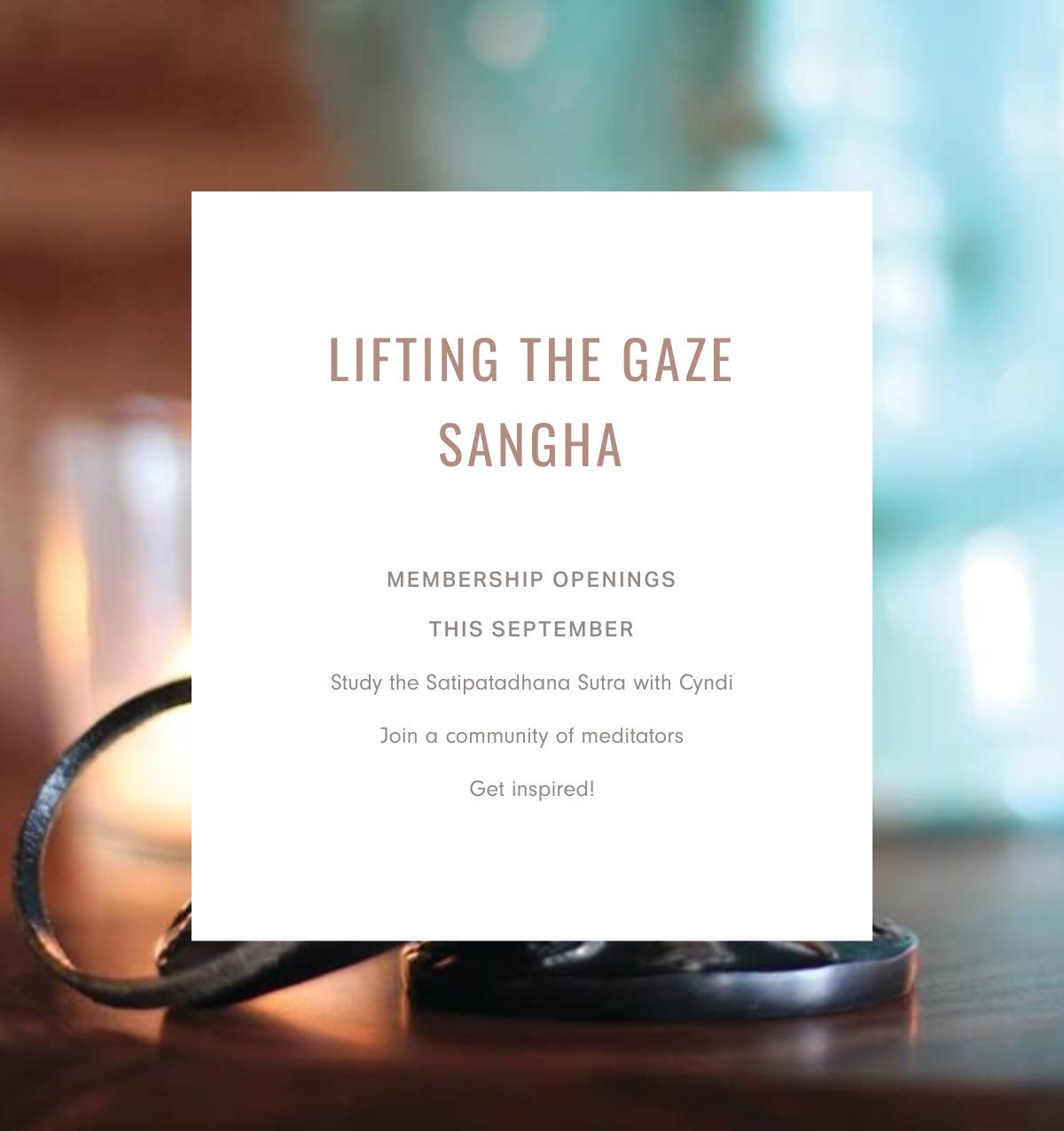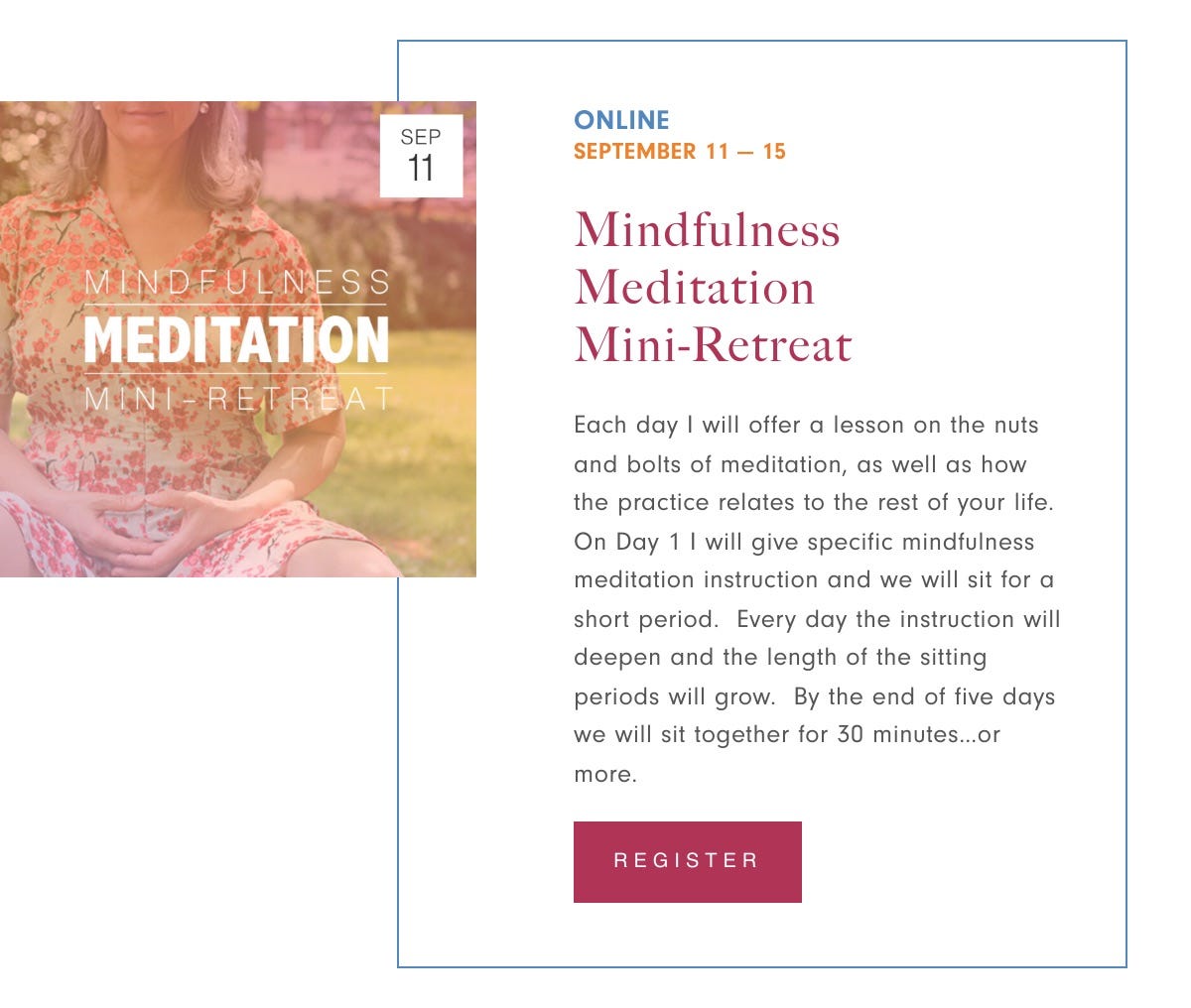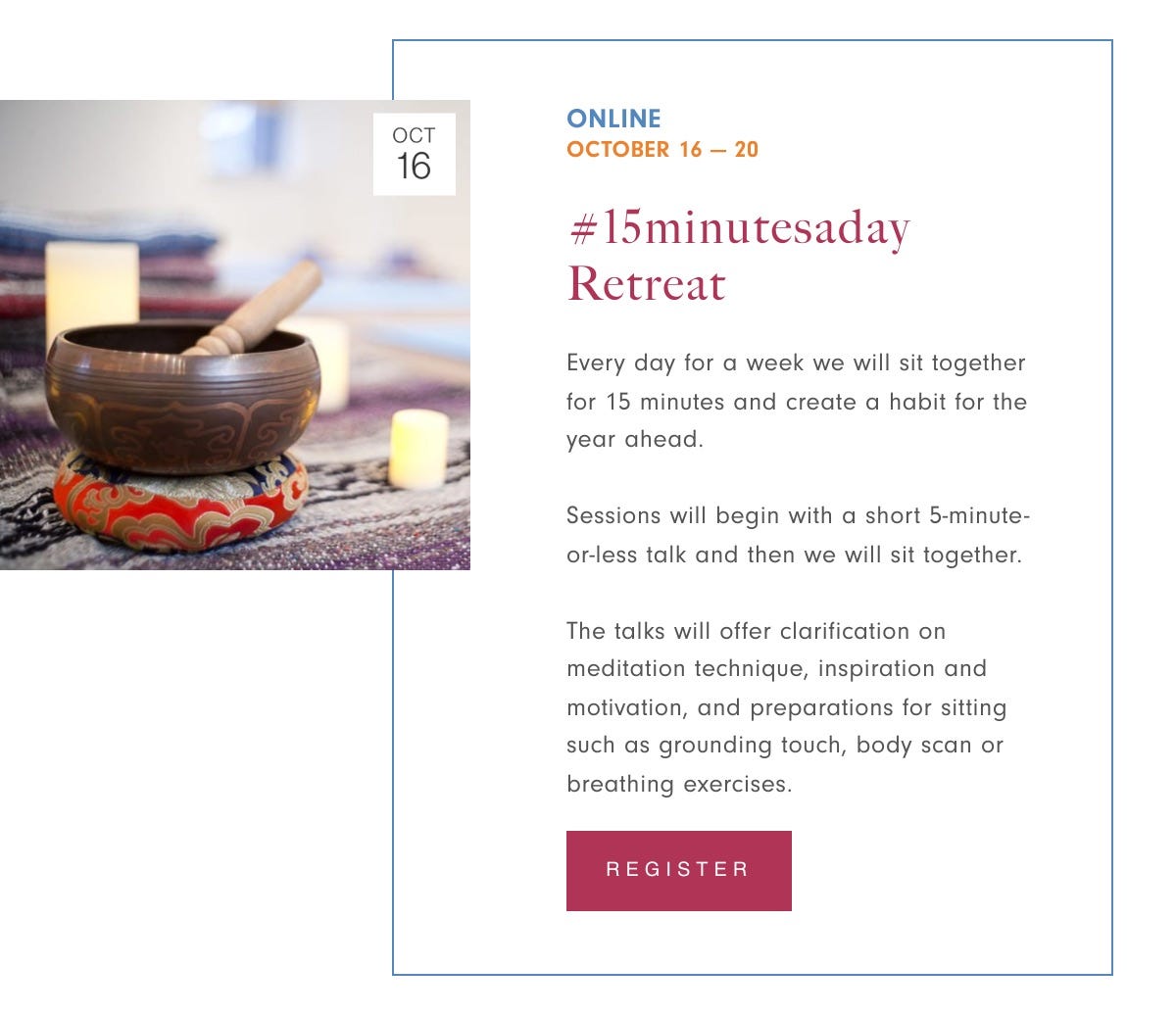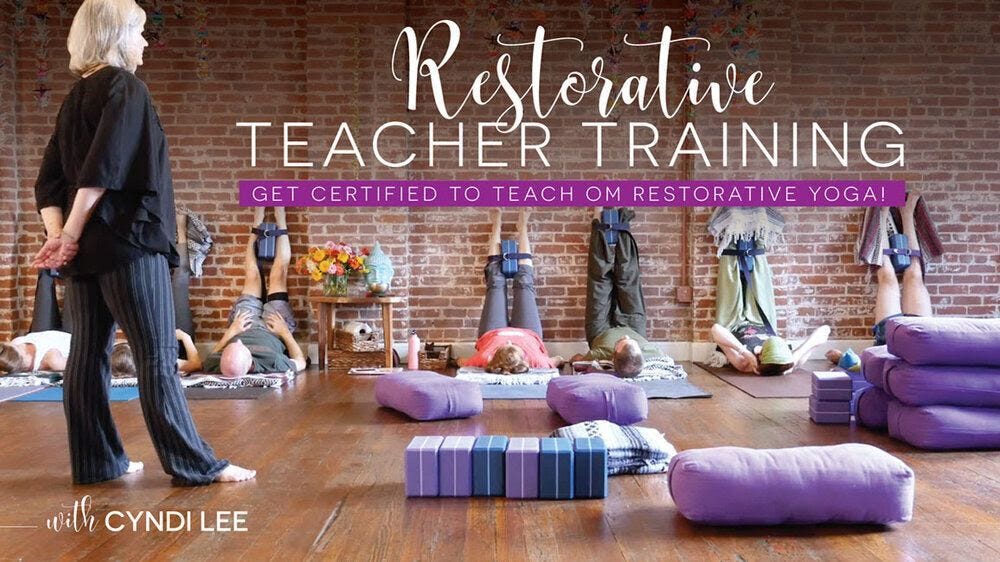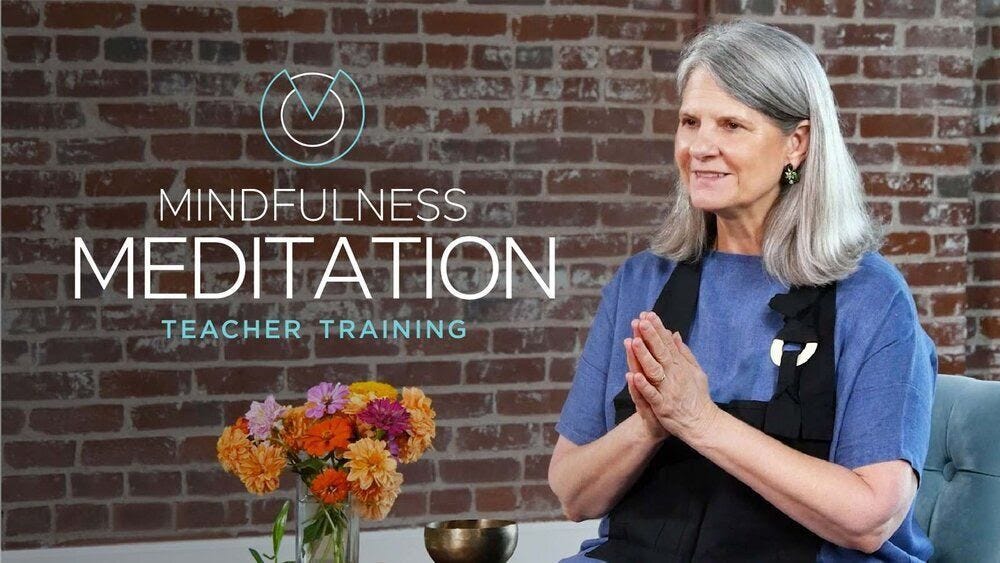After a few decades of practicing and teaching meditation, I have a good sense of where people get stuck in the practice. So the next few Drip, Drip, Drip posts are going to focus on the details: the technique and how to tweak it for you; obstacles to practice; sustaining motivation; recognizing the results, and the importance—or not —of a dedicated daily practice. Today’s post is about:
How to Recognize the Results of Your Meditation Practice
Many people want to meditate these days and it seems that there are plenty of resources for developing a practice. The unfortunate thing is that since meditation has moved into the world of commerce, the practice itself is now being pitched as transactional, like this:
Meditate and get this: relaxed and calm
Meditate and get this: more focused and work-efficient
Meditate and get this: less anxiety
Meditate and get this: happier
This sets up the new meditator for failure because meditation is a process, not a product. These sales pitches imply that the experience of meditation itself will be like dropping out of your regularly programmed life for a few moments of bliss and that, if you do it enough, your whole life will be more blissful even when you aren’t meditating.
This is why so many enthusiastic meditation virgins don’t last very long in the practice. They don’t feel a special bliss. They just feel like themselves, only sitting still. Busy mind, tired body, boring.
It is tough to stay motivated when meditating is challenging and it doesn’t seem like it is doing anything for you.
So what are the results of practice and how can we recognize them?
When I was a striving dancer teaching aerobics as my side gig in NYC, I lived in a sixth floor walk-up on St. Mark’s Place between 2nd and 3rd Avenues. One time a friend came over and together we plowed up the 75 stairs to my apartment. When we got to the top we were both out of breath. He said to me, “How come if you’re in such good shape, you are panting from climbing the steps?” My response: “Being in good shape doesn’t mean you don’t get out of breath, but it does mean you recover faster.”
We gain the same kind of “fitness” benefits from meditation, but instead of your body getting stronger, your capacity for awareness and insight grows.
The other night I stayed up late, way past my bedtime, because I was obsessing on a knitting project. Instead of leaving it to the next day when I wouldn’t be trying to understand this complicated pattern with a tired brain, I refused to give up and not only that, a giant fly was dive bombing me over and over. I was getting in a very bad mood.
When I finally went to join my husband, peacefully reading in bed, I snapped at him. As soon as I did that, I thought, “Wow, I am so crabby right now.” It didn’t make that feeling go poof! but it created some distance. My practice showed up for me in that moment because I was able to avoid solidifying my grumpiness. Then, because all feelings do is change, my mini-meltdown quietly ebbed away.
Meditation practice doesn’t mean you never get crabby. But it does mean you recognize it sooner and the temptation to grab onto it become less interesting.
This basic Buddhist teaching is called the Third Noble Truth, which says there can be an end to our suffering. Suffering takes the form of kleshas: craving, anger, hatred, jealousy, anxiety, ego-clinging. All of these kleshas—aka afflictive emotions—will still arise, but through mindfulness practice we get better and quicker at recognizing when that happens.
When we first start meditating, we are already familiar with what it is like to get lost in thoughts and how that can lead to being lost in reactivity. But over time our practice helps us clearly see those thoughts as impermanent. The seductive power of kleshas weakens and we start to see right through them.
This is not the same as “going deeper” in meditation. We are not withdrawing from life. Just the opposite—we are opening to all parts of who we are. We are expanding our perspective to be more spacious, curious, grounded.
This is the path to equanimity. That seems like a compelling reason to meditate. But you aren’t going to feel that right away either. It will show up in unexpected moments, over time.
Drip, drip, drip, the bucket fills.
Meditation Prompt:
Meditation is a process of getting familiar. The reason it works so well and gives us so many benefits is that meditation is about getting familiar with all of us. We don’t have to import any outside qualities or alien experiences. We just get familiar with different parts of ourself: fear and courage, sadness and joy, timidness and confidence.
Over time, becoming familiar with the range of capacities alive within us enables us to call up whatever innate resource we need at any given moment.
This also offers us a fresh perspective when we are stuck. Say you want to feel more content but you have a strong thought habit of wishing things were different.
The reason you want to feel content is that you are already familiar with being discontented. Try simply flipping that process.
Notice when you are content. Just touch into it. Get to know that feeling.
Just like I noticed when I was being grumpy, notice when you are stuck in resentment, boredom, anxiety, unhappiness, anger.
This noticing is an insight, and that alone can create the space for the opposite experience to arise. Notice that, too.
This is not about pretending you never feel anger or unhappiness, but it is about understanding that you also feel other ways, too. When we are stuck in a rut it is because we are wallowing in the afflictive emotions, which is not the same as dealing with them.
A first start to dealing with them is to recognize that these feelings do not own you. They are not the whole story.
New Class!
Other Ways to Practice With Me:
Online Courses on Yoga International:
Drip, Drip, Drip is a bi-monthly letter where I write about:
* How to touch into mindfulness meditation regularly.
* How to discover ways to wake up in your everyday life.
* How to reconnect to your own thread of awareness
* How to use what you’ve got - kids, dogs, neighbors, jobs.
* How to use what you already do - cook, walk, eat, sleep, laundry, work, play.
AND you get a monthly Mindfulness Meditation Prompt for integrating practice into every day life.
And….
if you decide to subscribe to Drip, Drip, Drip for $5/month you will also have access to:
* Ask Me Anything: Send me your questions about practice, Buddhism, dharma, why I like the word “ordinary,” do I need to meditate every day….anything at all!
* Three Things: recommendations for reading, listening, moving, creating, contemplating.


